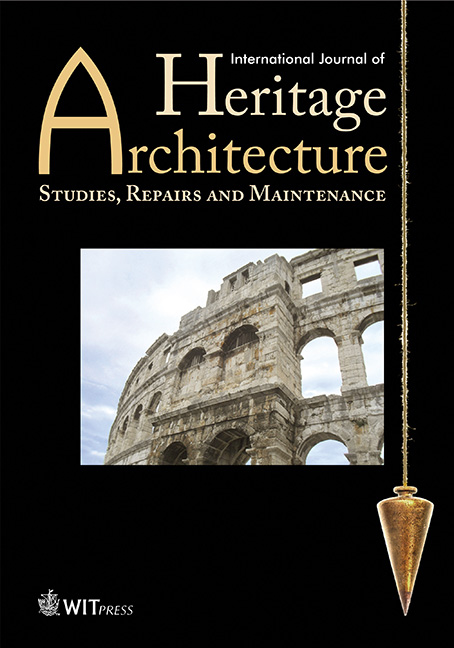KNOWING TO PRESERVE: THE BUILDING COGNITION PROCESS FOR THE CONSERVATION OF ST’ANNE CHARTERHOUSE, COVENTRY – UK
Price
Free (open access)
Volume
Volume 2 (2018), Issue 1
Pages
11
Page Range
90 - 101
Paper DOI
10.2495/HA-V2-N1-90-101
Copyright
WIT Press
Author(s)
RAFAELA SIMONATO CITRON
Abstract
Every architectural project involving building heritage, for either its conservation or its adaptive reuse, requires an intensive phase of research and analysis in order to learn about the building on which one will intervene. A project done without this knowledge will surely lead to a series of bad decisions that could cause irreparable damage to the building. This article presents as case study the St Anne Charterhouse, a Carthusian Monastery in the city of Coventry, England, and aims to show the cognition process conducted between the months of January and February 2013. It will demonstrate how the historical research, architectural survey and stratigraphic analysis were conducted on the building, showing step by step the knowledge acquired and how each piece of information has contributed to the reconstruction of the Priory during the Middle Ages and to arriving to a proposal for its adaptive reuse, opening The Charterhouse to the residents of Coventry. Knowing where every building was located within the monastery complex was important because only one building still stands after the rest was demolished with the dissolution of the monasteries in 1540 and to ensure that no possible use would conflict with the history of the monument. The building has gone through a long process of cognition that revealed some data that changed some of the initial design ideas. The results showed, for example, that instead of a building with four rooms as we previously thought, there were actually two buildings with no physical connection between them and that an important medieval painting had not been painted over but vanished with the replacement of the original wall. This research has been critical to the assessment of the possibilities for the reuse of The Charterhouse and will be exposed inside the building so the community can learn about its history.
Keywords
Charterhouse, cognition process, monastery




